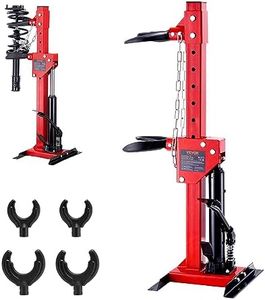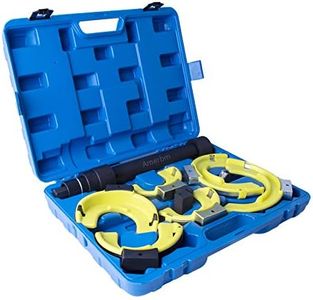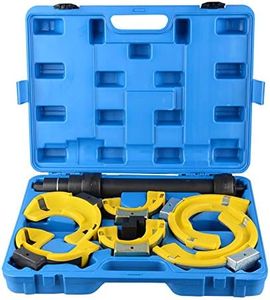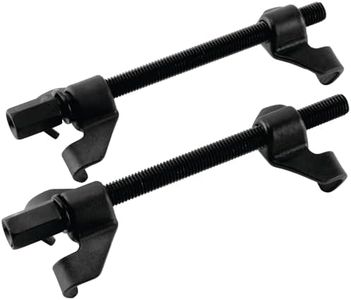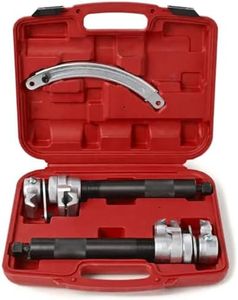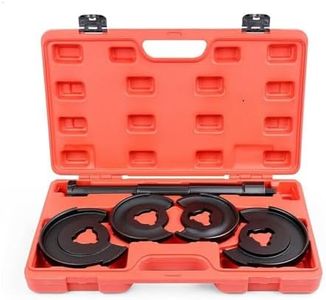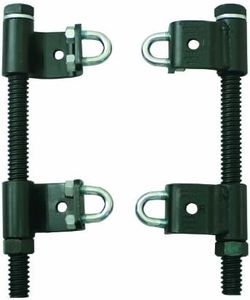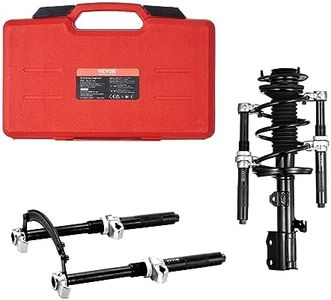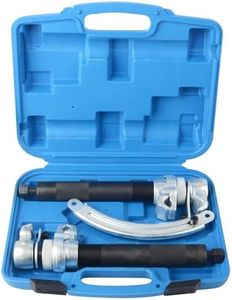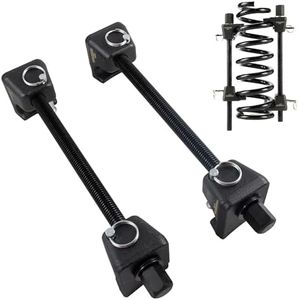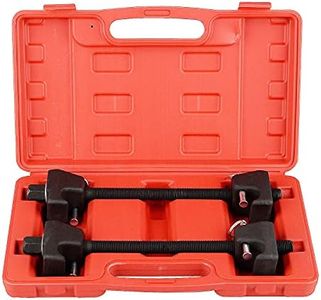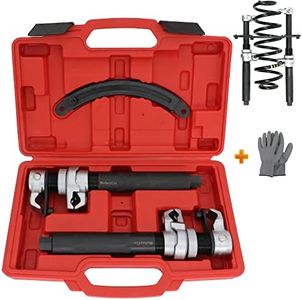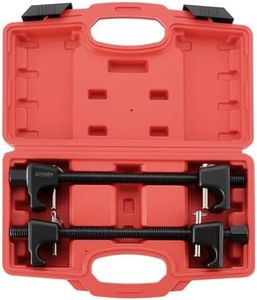We Use CookiesWe use cookies to enhance the security, performance,
functionality and for analytical and promotional activities. By continuing to browse this site you
are agreeing to our privacy policy
10 Best Strut Spring Compressors
From leading brands and best sellers available on the web.Buying Guide for the Best Strut Spring Compressors
Choosing the right strut spring compressor is essential for anyone planning to do suspension work on their vehicle. The tool is used to safely compress coil springs so they can be removed or installed without causing injury. When shopping for one, it’s important to focus on safety, compatibility with your vehicle's springs, ease of use, and durability.Type of CompressorThe type of strut spring compressor determines how it attaches to and compresses the spring. There are internal and external models. Internal compressors fit inside the coil spring, while external ones clamp around the outside. External compressors are most common for cars, offering better grip and ease of use. However, some springs or limited space might require an internal model. To choose the right one, consider how much space you have to work with and the type of spring on your vehicle. If you are working with common passenger vehicles, external compressors generally offer more flexibility.
Maximum Jaw OpeningMaximum jaw opening refers to how wide the compressor’s arms can spread to grip the coil spring. This is important because it decides the range of spring sizes the tool can accommodate. Compressors with smaller jaw openings are typically suitable for compact cars with smaller springs, while those with larger jaw openings are needed for trucks or SUVs with larger coil springs. To pick the right one, check your vehicle's spring measurements and ensure the compressor exceeds those dimensions.
Build Material and QualityThe material and build quality of a spring compressor impact its strength and safety. Most are made from high-strength steel, but thickness and design can vary. Some models feature heat-treated components for extra durability. A sturdier, well-made compressor is safer and will last longer. If you plan on using the tool only occasionally, standard steel should suffice, but frequent users or those working on heavy-duty vehicles should look for reinforced designs.
Safety FeaturesSafety features such as locking pins, safety hooks, or anti-slip jaws add an extra layer of protection when compressing springs under high tension. These features minimize the risk of the tool slipping or releasing unexpectedly. If you are not very experienced with suspension work or want maximum peace of mind, prioritize compressors with additional safety mechanisms.
Ease of UseSome compressors are designed with features like built-in handles, easy-to-turn drive bolts, or quick-release mechanisms. These can make the process smoother and reduce frustration, especially for beginners. Consider how comfortable and intuitive the tool looks, especially if you haven’t used one before. If you’re new to DIY car repairs, user-friendly designs are definitely beneficial.
CompatibilityCompatibility refers to whether the compressor works with the specific type and size of coil springs on your vehicle. Not all compressors fit all vehicles. To avoid disappointment, check the product details or manual for a list of compatible spring types and vehicles. When in doubt, measure your spring’s diameter and coil gap to match with the compressor’s specifications.
